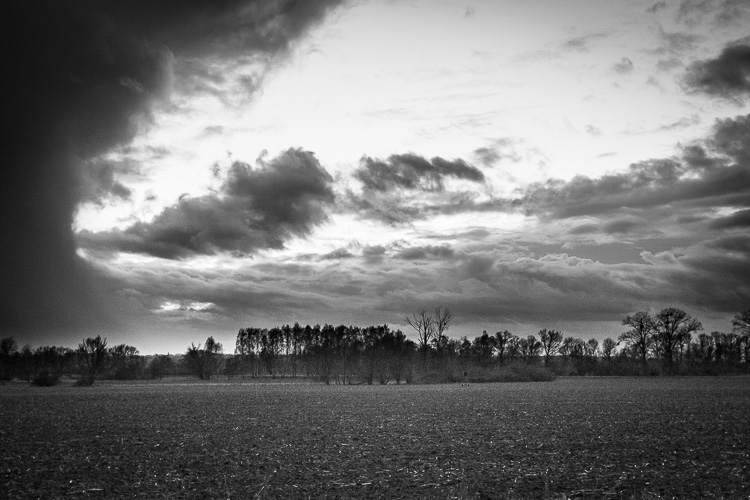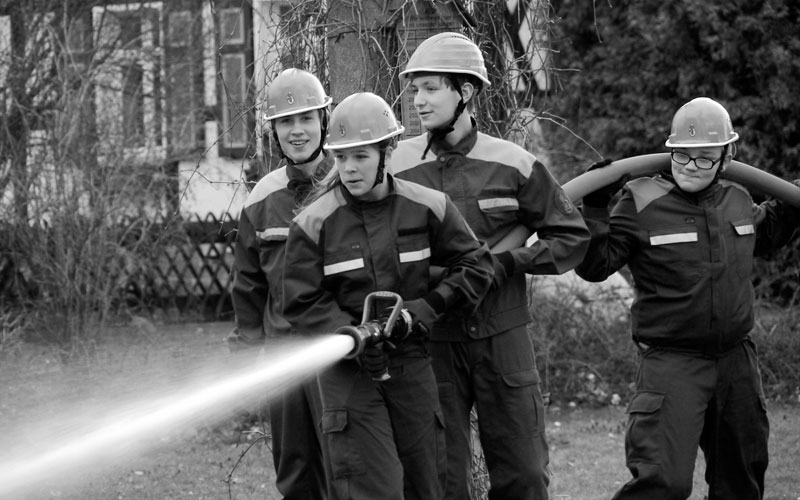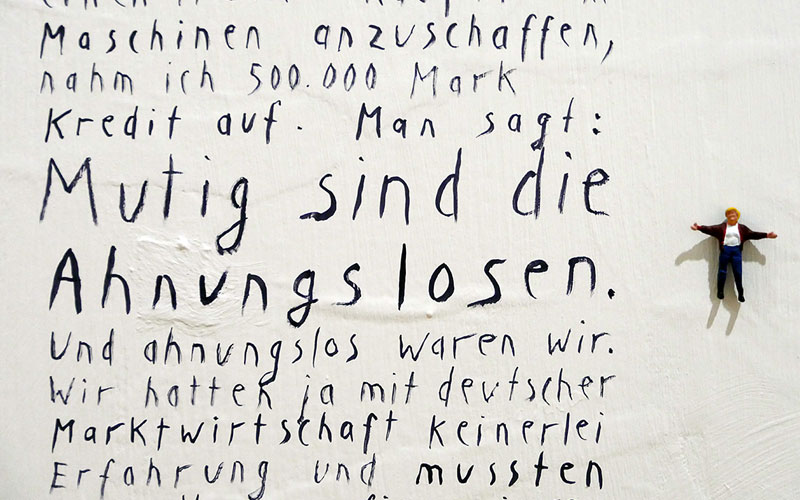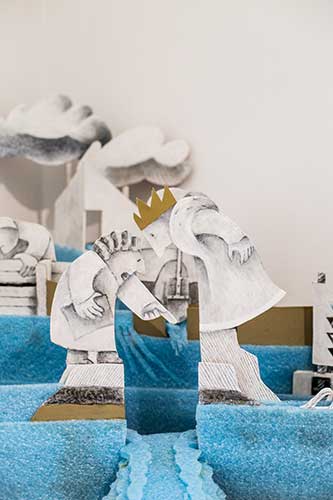The Oderbruch Museum Altranft develops its exhibitions, programs and cooperation projects in annual themes. The results are reflected in the current annual program and become a permanent part of the exhibition tour.
Nature
Annual theme 2022
For a long time we have been planning an annual theme "Nature" - now it is time. As always, it will be founded on the interviews of people who have experiential knowledge due to their activity or in the daily observation of the landscape. From their reports and the accompanying photographs, the exhibition, the workshop book, the stage production and the topics of conversation will be developed. We are professionally supported by the Landschaftspflegeverband Mittlere Oder.
So there is much to see and look. Be very welcome!

Stubbornness
Annual theme 2021

Stubbornness - this term is used to refer to various layers of rural culture. On the one hand, it refers to the proverbial stubbornness of the peasant, which is devalued as obtuseness or intransigence.
But stubbornness also requires a spirit of resistance. Those who are stubborn do not like to be told what to do by others and claim sovereignty by virtue of their own practice. It is above all the subsistence experiences of rural life in which rural stubbornness shows itself. The word "sense" should not be overlooked either: It refers to the fact that rural practice, at its best, has a high spiritual sufficiency.
While the urban supply societies are usually very willing to adapt to new fashions and language rules, the countryside often behaves unwieldily in the face of the dynamic society. This traditional finding, according to which the world in the countryside comes to an end 100 years later, will be traced in our annual theme using the example of the Oderbruch: in subsistence farming and rural communication, in village nature conservation, in festival culture, in the ability to repair and, of course, in the stubbornness of collecting. We cordially invite you to join us!
People in the Oderbruch
Annual theme 2020
This year, we are focusing on people who are committed to the cohesion of rural society. Their local, village and sports clubs, the voluntary fire departments, the municipal councils and local advisory boards, the choirs and bands, all these forms of community contribute to a successful rural life in the Oderbruch. This is matched by the many roles that people play in the countryside in addition to their jobs. You have to get involved; if something is not done yourself, no one will do it. We want to pay respect and tribute to these people and together find out something about their commitment and their motives. What have they given to their rural society and achieved for it? Where did they experience limits or fail? And, of course, we are interested in the question of how these people assess the future of rural society in the Oderbruch.

Building culture in the Oderbruch
Annual theme 2019

Rural building has long been an important subject of historic preservation. However, our theme for the year focused primarily on the current treatment of historical building fabric. What is life like today in old farms or loosely built homesteads that were once built for completely different uses and lifestyles? What do old churches or administrative buildings tell us and to what extent can this narrative be made productive today? Which craftsmen face the preservation of historic building fabric and what are their experiences, in relation to their clients and to the technologies used today? This relationship between people and buildings is an important part of rural culture - it was great fun to explore.
Agriculture and Oderbruch
Annual theme 2018
The Oderbruch is an agricultural landscape. Its alluvial clay soils are fertile but difficult to work. Agricultural existence in the Oderbruch has always been a struggle with water. The colonists in the Bruch were predominantly free farmers - and many still are today. For a long time, they marketed their products to the metropolitan area of Berlin. In the meantime, most of them live from market crop farming, but many farms are looking for new ways.
Hardly any other topic is currently as controversial as modern agriculture. As a workshop for rural culture, we have contributed to this social debate by taking up the experiences of farmers in 25 surveys and making them visible in cultural-artistic formats. Four exhibitions, a theater play, two film evenings, a small music festival, a workshop book and various educational projects were dedicated to this task.

Water and Oderbruch
Annual theme 2017

The "Teich- und Uferordnung für die Lebusische Niederung an der Oder" (Pond and Bank Regulations for the Lowlands of Lubusz on the Oder), issued in 1717 by the Prussian King Frederick William I, marks the beginning of the dike association system in the Oderbruch. Accordingly, the Gewässer- und Deichverband Oderbruch GEDO can look back on a 300-year history in which people have secured their settlement area on a daily basis, controlled the water balance and coped with many flood events.
With the floods of 1947 and 1997, 2017 also marks two existential experiences: the disaster suffered and the disaster averted together.
300 years, 70 years, 20 years - on the occasion of these three historical anniversaries, the Museum Altranft designed the theme year 2017 with many partners. The exhibition on the annual theme "The quarry and its water" was at the center. It was flanked by a theater production, many cooperation projects in the Oderbruch, activities in cultural education and an accompanying annual publication.
Craft in the Oderbruch
Annual theme 2016
Even in times of advancing industrialization, handicrafts form an important economic pillar of rural areas alongside agriculture. Because it needs the human hand, it is always contested and in a state of flux. What are the traditions on which today's crafts are based? And how do the region's craftsmen see their own future?
The focus of our annual theme was the Kulturland project "A Craftsman's House for Altranft," which involved working with craftsmen from Altranft to build an exhibition stand in the estate park that ultimately displayed photographs by Ingar Krauss and quotes from interviews with craftsmen in the region. The exhibition can now be seen in the museum's blacksmith's yard. In addition, various educational projects, collaborations, a workshop book, and a play were realized.
